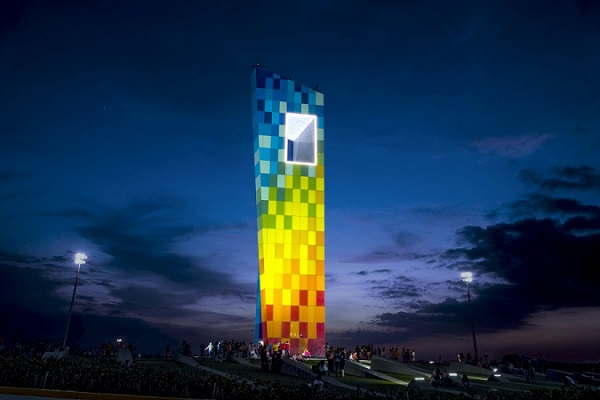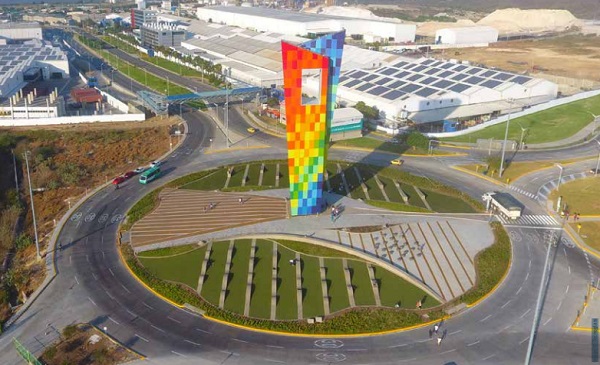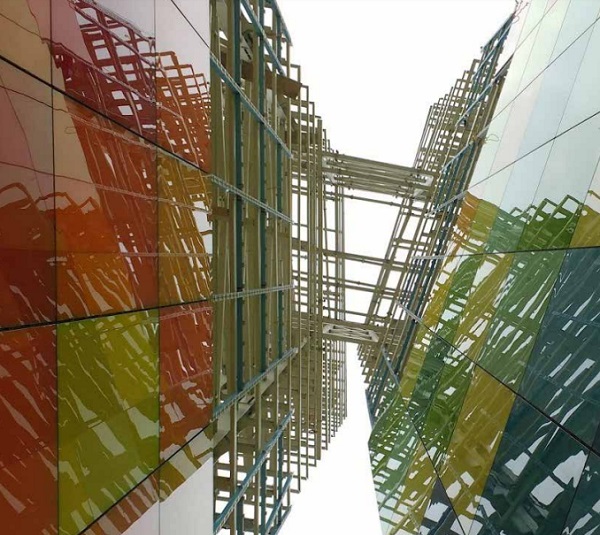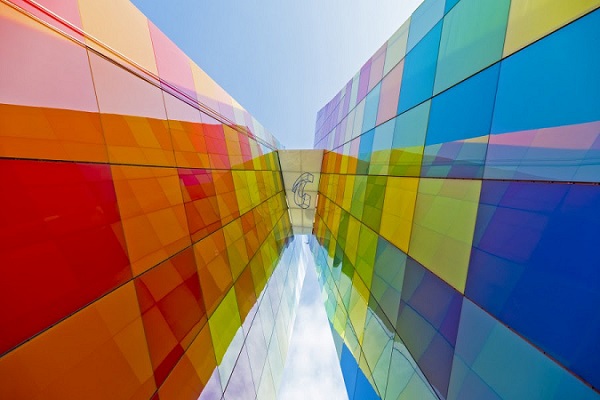Post Time:Nov 19,2018Classify:Industry NewsView:1252
The monument, sited on a roundabout on Avenida Circunvalar, near the city’s industrial area, uses a huge steel and aluminium frame to support more than 2,000 m2 (21,500 ft2) of colored laminated safety glass. Arranged in a harlequin pattern, the glazed panels − in shades of red, yellow, green, blue and white − cover the entirety of the structure in a multi-colored façade that is both complimentary and contrasting to the surrounding area.
Barranquilla, an important Colombian seaport flanked by the Magdalena River, is the capital of the country’s Atlántico Department. Well known internationally for its enormous Carnival, which brings together costumed performers, elaborate floats and cumbia music, it was also the host location for the 23rdCentral American and Caribbean Games.

The monument’s design − by Diana Escorcia Borelly, an architect at GA estudio − was chosen by a jury comprising representatives from the Ministry of Culture, the Mayor’s Office, the Modern Art Museum of Barranquilla, the Colombian Society of Architects and a representative from the Tecnoglass group. It was one of more than 90 entries in a competition that was the brainchild of Christian and José Manuel Daes, COO and CEO of the Tecnoglass group. Part of the brief for the competition was that the design should represent why the city of Barranquilla is Colombia’s window to the world.
According to Daes: “One of the requirements for the design of the monument was that it had to be made of glass and aluminium, which are the main products offered by the Tecnoglass Group. Glazing, besides showing our identity as a company, allowed us to give the project the distinctiveness that the architect wanted to achieve for the monument: a striking, cheerful, colorful and innovative design that represents the cultural heritage of Barranquilla and the character of its Caribbean people.”
Due to its height and the environmental conditions, laminated safety glass was essential to not only offer the necessary strength, but also the longevity and clarity required to help ensure its remains as vibrant a landmark as possible for as long as possible.
For this reason, the engineers turned to leading interlayer supplier Trosifol™. Two interlayers from the company’s comprehensive portfolio were chosen for their specific functional and aesthetic capabilities.
For the top and horizontal surfaces of the monument a 1.52 mm SentryGlas® ionoplast interlayer was deployed, sandwiched between two 6 mm low-iron glass panes; while at the bottom, a 1.52 mm SentryGlas® interlayer was used, between 6 mm and a 4 mm panes.
For the main body a 1.14 mm Trosifol® Ultra Clear polyvinyl butyral (PVB) interlayer was used between two 4 mm panes, with the coloration being delivered by a colored 100% ceramic frit on side four of the laminated panels.
In both cases, as well as for their post-breakage strength and environmental performance, these interlayers were chosen for their industry-leading edge stability and, in the case of the Trosifol® Ultra Clear, its optical performance, in order to deliver the truest and most vibrant colors possible from the colored frit.
According to Diana Escorcia Borelly: “Glazing was the main aesthetic component of the design. The combination of colors − and the reflections of the surroundings − gave to the monument a perfect look; allowing observers to enjoy it and feel it just the way it was planned during the design process. It was important that we used laminated safety glass, because due to the monument’s height, it could also attract lightning.”

Daes adds: “Besides offering safety and color durability, laminated glass was the only kind of glass that fulfils the technical requirements for this kind of project. Our team of engineers at Tecnoglass considered that laminated glass offered a wide range of benefits, such as safety, durability, and resistance to strong winds. Besides offering strength, impact resistance and superior environmental performance, these particular interlayers were also chosen to give us the visual impact we were looking for.

“More than 800 panels of glass were required for this project,” he continues, “60 % of the glass panels were a standard 1 m x 2.10 m rectangular shape, while, due to the inclined design of the monument, the remaining 40 % of the panels exhibited different shapes and dimensions. As in all constructions we undertake, for this project we performed structural design calculations that meet the safety requirements of the local construction law.
“Laminated glass is an industry transformer,” Daes concludes, “because it’s capable of providing durability, high performance and multiple functional benefits, such as safety, security and sound control, as well as hurricane and blast resistance. Indeed, the monument is able to resist winds of up to 200 km/h. During the design and construction process, Kuraray gave us very valuable advice on which interlayer was the best option for this project.”
This project highlights the flexibility and capabilities of Trosifol™ interlayers and their ability to be deployed in a wide variety of different applications. This monument demands the same functional, safety and aesthetic capabilities as any other architectural project and, as such, will be a highlight on the city’s horizon for many years to come.

Source: www.trosifol.comAuthor: Shangyi